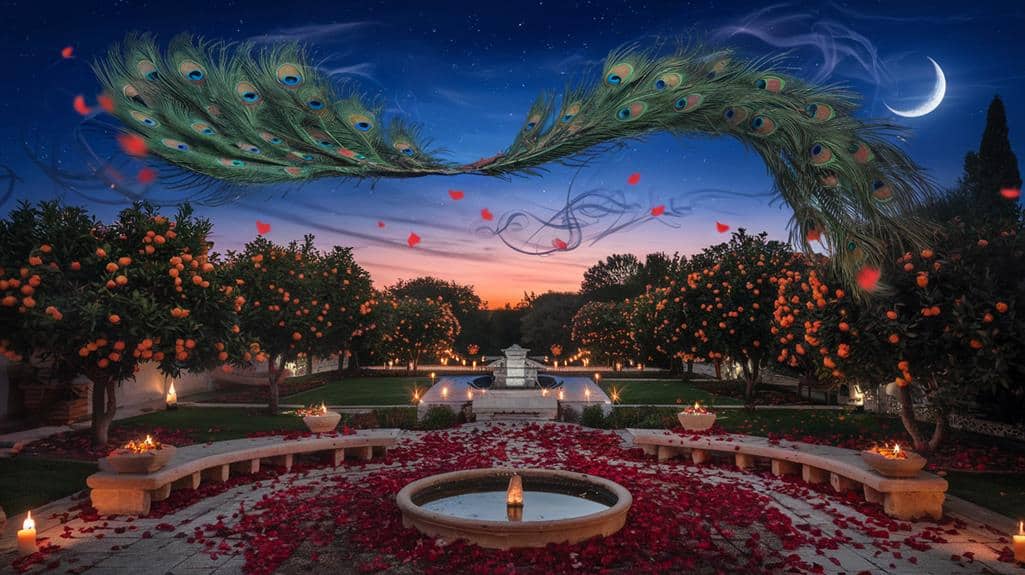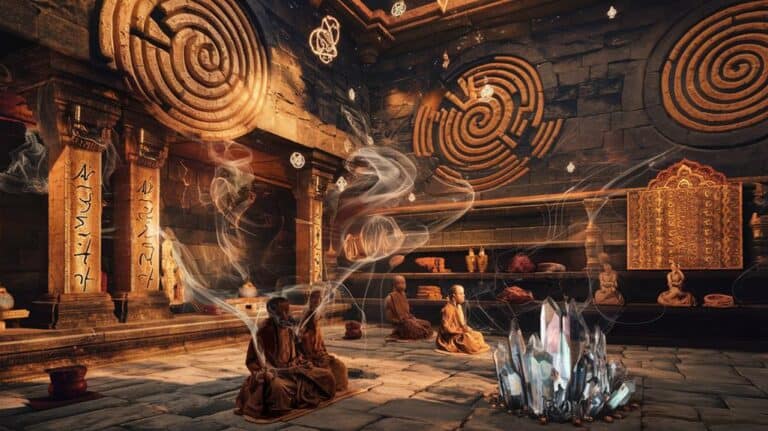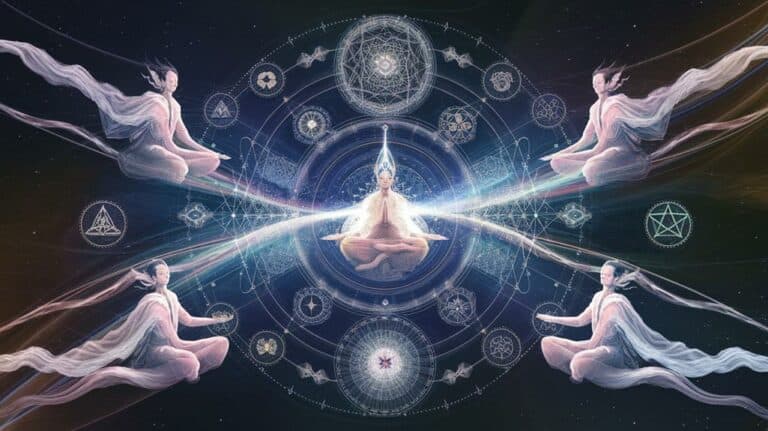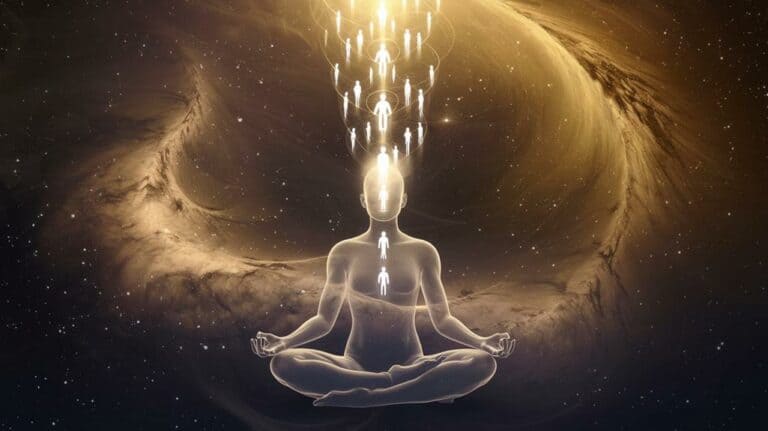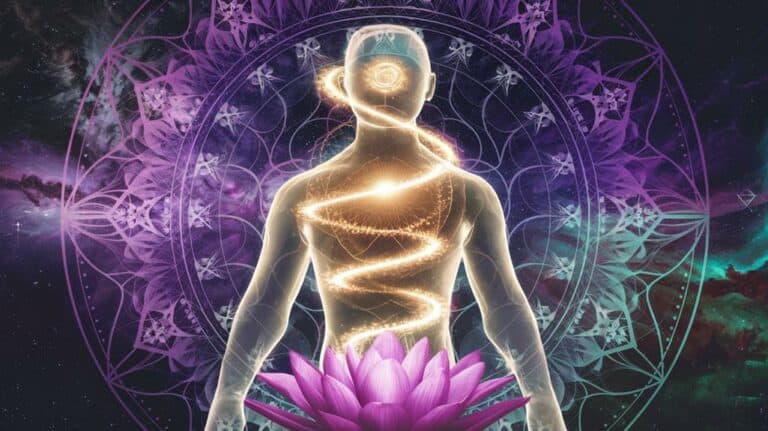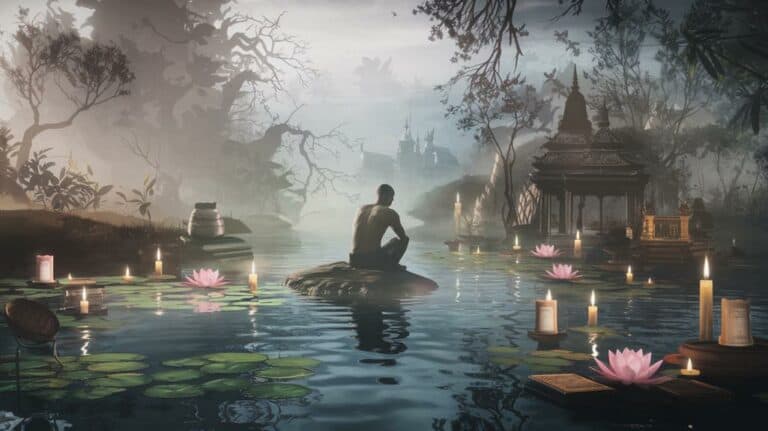Mystical Poetry and Literature (E.G., Rumi, St. John of the Cross)
When you first encounter mystical poetry, you’ll notice it doesn’t follow conventional rules of expression. You’re not simply exploring words on a page; you’re entering a domain where language bends to capture the uncapturable. Writers like Rumi and St. John of the Cross transform ordinary experiences—love, longing, separation—into gateways to divine understanding. They’ll challenge your assumptions about reality, using paradox and metaphor to point toward truths that exist beyond rational thought. As you begin this journey through mystical literature, you’ll discover why these ancient voices continue to resonate with modern seekers of spiritual wisdom.
Origins of Mystical Writing
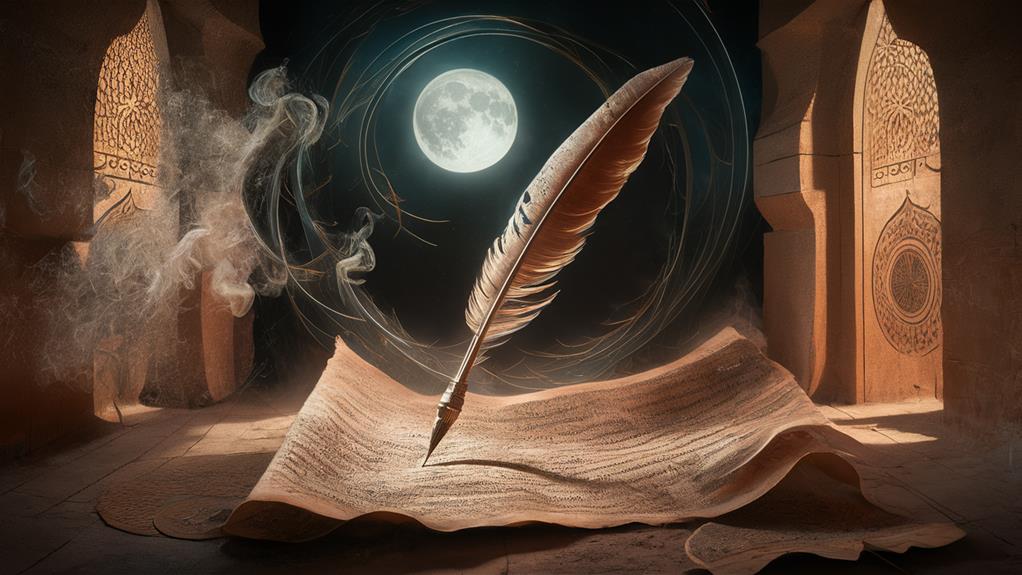
Ancient civilizations birthed mystical writing through their attempts to understand and commune with the divine. You’ll find these early expressions in Mesopotamian hymns, Egyptian sacred texts, and Sanskrit verses that reach toward transcendent truths beyond ordinary perception.
As you explore deeper, you’ll discover how shamanic traditions and oral storytelling laid foundations for what would become systematic approaches to mystical literature.
When you trace mystical writing’s evolution, you’ll see how it emerged from humanity’s fundamental need to bridge the gap between earthly existence and divine reality. You’re walking the same path as those who first developed specialized languages and symbols to capture ineffable experiences.
In temples and sacred groves, early mystics developed techniques of metaphor and allegory that you’ll recognize in later works. They crafted methods to describe the indescribable, shaping words into vessels for spiritual insight.
These ancient origins continue to influence how you encounter mystical texts today, whether you’re reading Sufi poetry or Christian contemplative works. Their artistic innovations still serve as bridges between human consciousness and the mysteries they sought to explore.
Common Themes Across Traditions
Three fundamental themes weave through mystical literature across cultures and centuries: the quest for divine union, the transformation of consciousness, and the limitations of ordinary language.
You’ll find these threads running from Rumi’s ecstatic verses to St. John of the Cross’s dark night, from Kabir’s penetrating insights to the Zen masters’ paradoxical koans. The yearning for union with the divine appears as a constant flame, whether it’s expressed through the metaphor of lover and beloved, wine and intoxication, or the drop merging with the ocean.
You’re invited to witness how mystic writers struggle with the paradox of describing the indescribable, often turning to poetry when prose falls short. Their words point to experiences that transcend the boundaries of conventional thought and perception.
The transformation of consciousness emerges as both journey and destination, where you’re called to die to your old self before awakening to a broader reality.
These writers don’t just describe spiritual experiences; they create pathways through their words that can spark similar awakenings in receptive readers, making mystical literature not just descriptive but transformative.
Language of the Ineffable
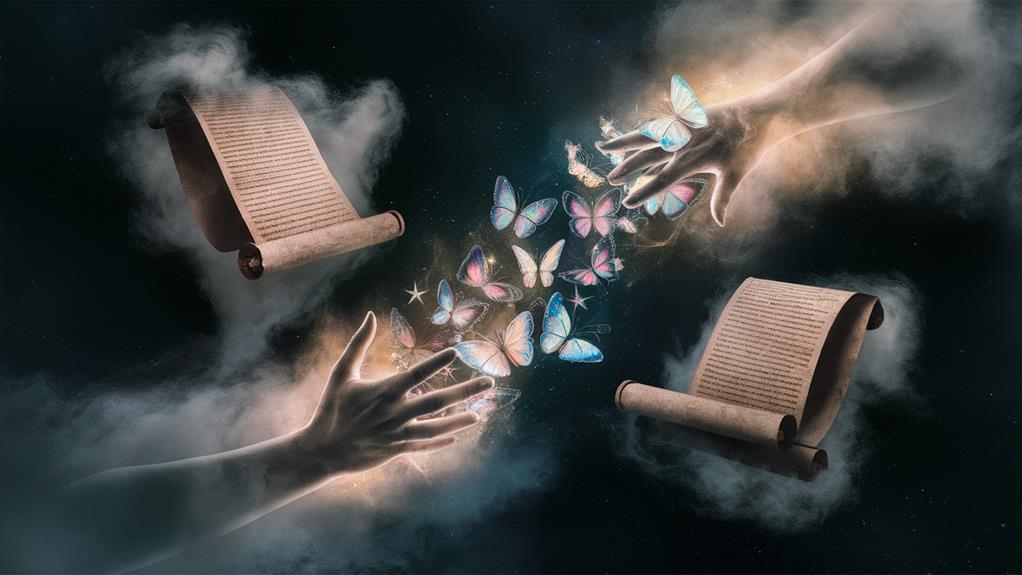
Stretching beyond ordinary expression, mystical writers face a fundamental paradox: how to capture infinite experiences with finite words. You’ll find them reaching for metaphors, symbols, and paradoxical language to bridge the gap between earthly understanding and divine revelation. When you encounter their work, you’re witnessing their struggle to translate the untranslatable.
In their quest to express the ineffable, mystics often turn to nature’s imagery – the ocean’s depths, the sun’s radiance, or the wind’s invisible force. You’ll notice how they’ll pile image upon image, knowing that no single metaphor can contain the vastness they’re trying to convey.
They’ll speak of darkness that illuminates and silences that speak, breaking conventional linguistic boundaries to shake you free from ordinary perception.
When you read Rumi’s whirling verses or St. John of the Cross’s dark night, you’re encountering language pushed to its limits. These writers don’t just describe mystical experiences; they create linguistic portals that invite you to step beyond the boundaries of ordinary consciousness, where words dissolve into direct knowing.
Major Mystical Writers
This rich tradition of mystical expression finds its greatest voices in writers who’ve mastered the art of transcendent communication.
You’ll discover Rumi’s ecstatic verses whirling with divine love, while St. John of the Cross guides you through the dark night of the soul with his penetrating insights.
These poets have charted paths through domains beyond ordinary perception, leaving behind breadcrumbs of wisdom in their words.
When you explore William Blake’s prophetic works, you’ll encounter visions that bridge heaven and earth, while Hildegard of Bingen’s illuminated texts reveal the verdant power of divine creativity.
The Sufi poet Hafez invites you to taste the wine of spiritual intoxication, and Julian of Norwich shares her revelations of universal love through simple, profound metaphors.
You’ll find Kabir weaving Hindu and Islamic mysticism into verses that transcend religious boundaries, while Meister Eckhart’s sermons pierce the veil between the human and divine.
These mystic writers don’t merely describe spiritual experiences – they transform consciousness through language, creating portals through which you can glimpse the ineffable truth they’ve encountered in their own journeys.
Symbolism and Sacred Metaphor
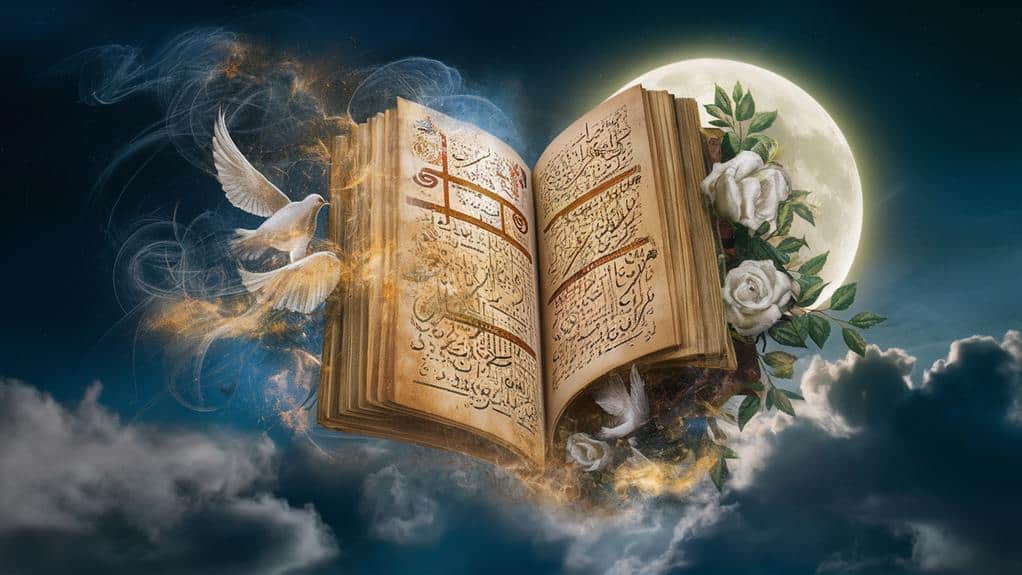
Deeply woven into mystical literature‘s fabric, symbolic language and sacred metaphors serve as bridges between ordinary reality and transcendent truth. You’ll find these elements aren’t mere poetic devices but essential tools that mystics use to express what often lies beyond words.
When you encounter the “dark night” in St. John of the Cross’s poetry, you’re touching a universal symbol of spiritual transformation, while Rumi’s “wine” represents divine intoxication that you can’t explain through literal language.
As you explore deeper into mystical texts, you’ll discover how natural elements become gateways to sacred understanding. The ocean represents divine unity, the moth drawn to flame symbolizes the soul’s yearning for union, and the rose embodies perfect spiritual unfoldment.
These symbols work on multiple levels within your consciousness, revealing deeper truths as you return to them repeatedly. You’ll notice how mystics across traditions often draw from similar symbolic wells – mountains, gardens, birds, and light – creating a universal language of spiritual experience that transcends cultural and religious boundaries.
Through these metaphors, you’re invited to recognize the sacred in the ordinary and the infinite in the finite.
Impact on Modern Spirituality
The rich symbolism of mystical poetry continues to resonate powerfully in today’s spiritual landscape. You’ll find that ancient mystic verses, once confined to monasteries and temples, now flow through meditation apps, yoga studios, and contemporary spiritual retreats.
When you explore works by Rumi, St. John of the Cross, or Kabir, you’re tapping into a timeless wisdom that transcends religious boundaries and speaks to modern seekers.
In your quest for meaning beyond materialism, you’ll discover how these poets’ words serve as bridges between traditional faith and contemporary spirituality. You’re part of a growing movement that’s rediscovering mystical literature’s ability to illuminate personal transformation.
Through their metaphors of divine love, spiritual awakening, and inner revelation, you’ll find practical guidance for your own journey. These poets’ teachings have influenced mindfulness practices, holistic healing approaches, and interfaith dialogue, offering you tools for maneuvering life’s complexities.
Their enduring impact lies in their ability to articulate the ineffable, helping you understand your deepest experiences while connecting you to a centuries-old tradition of spiritual exploration.
Interpreting Mystical Literature Today
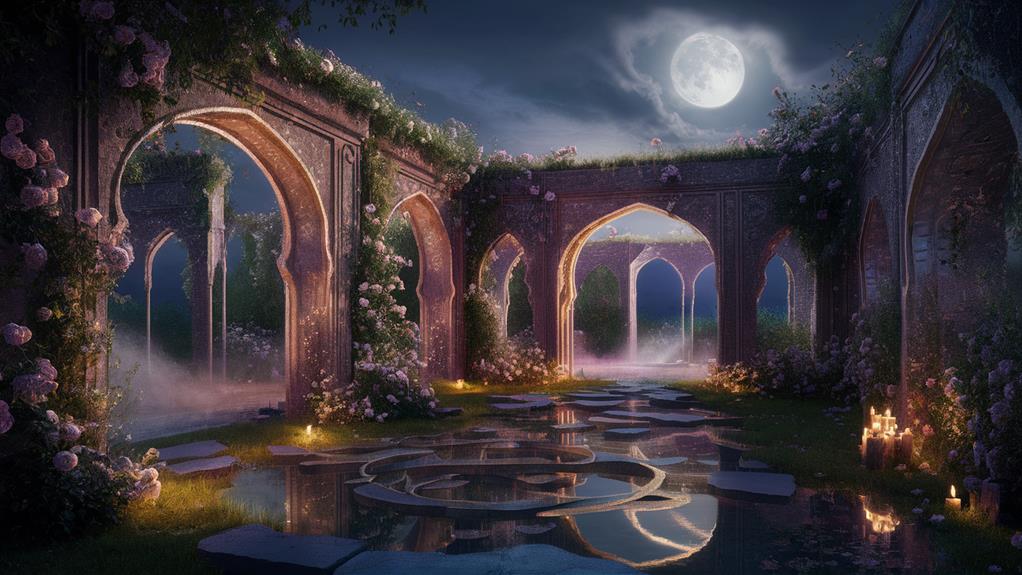
Modern readers often wrestle with decoding mystical literature‘s layered meanings and esoteric symbolism. When you approach texts like Rumi’s poetry or St. John of the Cross’s “Dark Night of the Soul,” you’ll find that contemporary interpretations require both historical context and personal intuition.
You’re not just reading words on a page; you’re engaging with transformative wisdom that’s survived centuries.
To reveal these texts’ deeper meanings, you’ll need to embrace their paradoxical nature. You can’t simply analyze them with pure logic – they’re meant to bypass your rational mind and speak directly to your soul.
Consider how metaphors of divine love might reflect your own spiritual journey, or how descriptions of mystical union could illuminate your search for meaning. You’ll discover that many mystical works use universal symbols – the garden, the beloved, the night – that still resonate today.
Don’t shy away from multiple interpretations; mystical literature thrives in the space between literal and symbolic understanding. By approaching these texts with both scholarly respect and spiritual openness, you’ll find they’re as relevant now as when they were first written.



